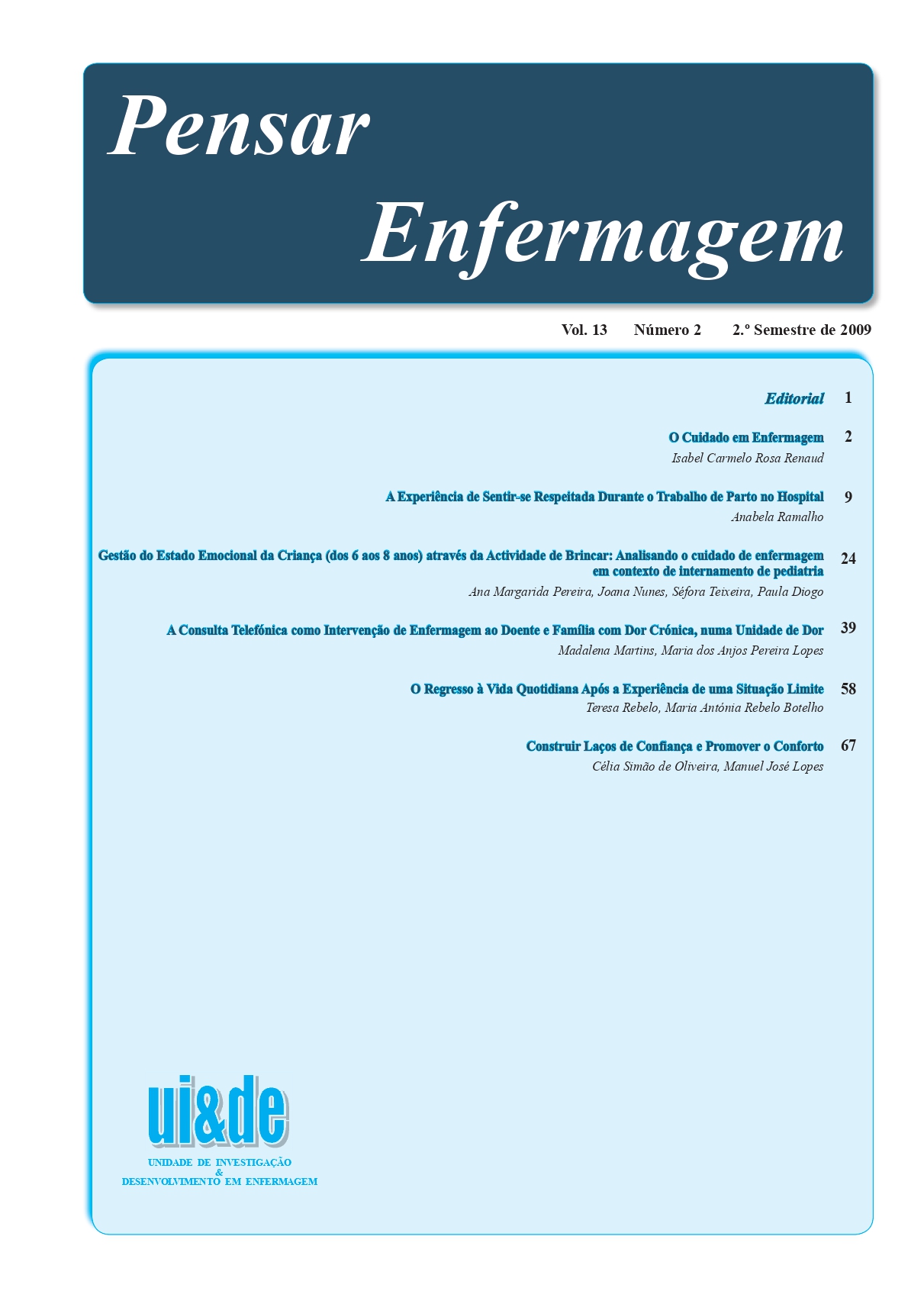Published 2010-07-04
Keywords
- situation limit,
- transition,
- adult,
- experience-lived
How to Cite

This work is licensed under a Creative Commons Attribution 4.0 International License.
Abstract
This is a study to understand the processes of self-care in the transition dynamics, founders of the return to everyday life of adults confronted with a limit situation (Jaspers, 1955). The experience of the threat itself and the possibility of limit are processes of the
human response in face to disruption of a serious illness experienced as a limit situation.
It is based on the existential concept of health in the context of caring as a vital dimension of human action, particularly when the challenge is to safeguard and mobilize all that makes living and existence possible. The central objective of this study is to highlight the experiential processes involved.
The limit situation is a singular experience, it is valued by its inside and not by facts or by objective measurements, so only if they can clarify the perspective from within. Thus, understanding the lived experience of individuals who move from the experiences of limit situation for their daily life, advises a biographical approach which involves the narrative of the subject in a context of interaction.
There were produced narratives of 8 adults which, after having experienced extreme situations arising from an event of serious suddenly illness, they were already playing their customary roles.
The narratives were produced on the model of an explicit focused interview (Vermersch, 1989), varying the number of encounters between 3 and 5, starting with analysis and interpretation.
This work follows a set of procedures from reading the corpus to the drafting of a summary of emerging themes with articulated objectives. Although we have some data around the live event - the instant-time opening for the former and future time - including
landmarks, symbols and meanings attributed to those relating to the trajectory of transition are not yet “discovered” (it is the stage in which we currently are).

